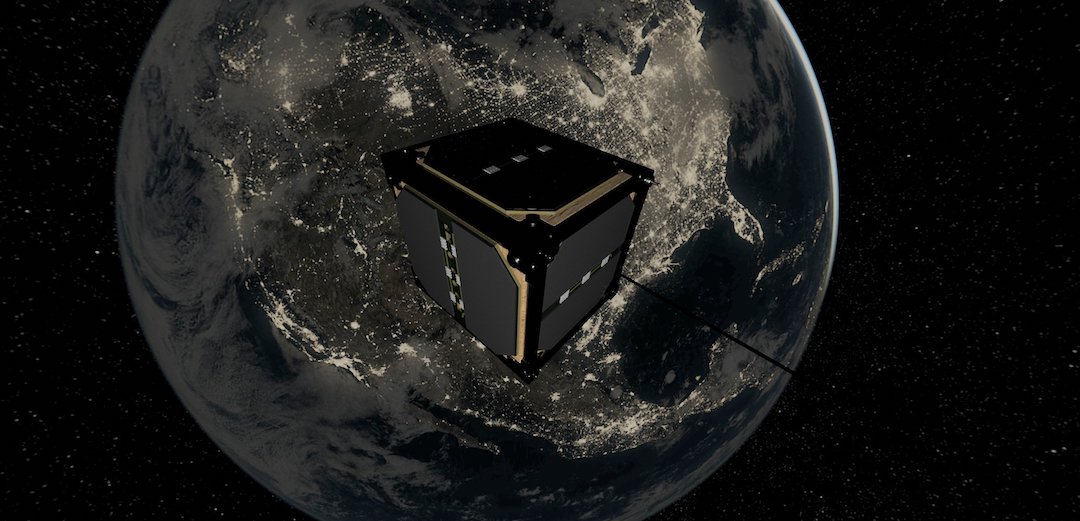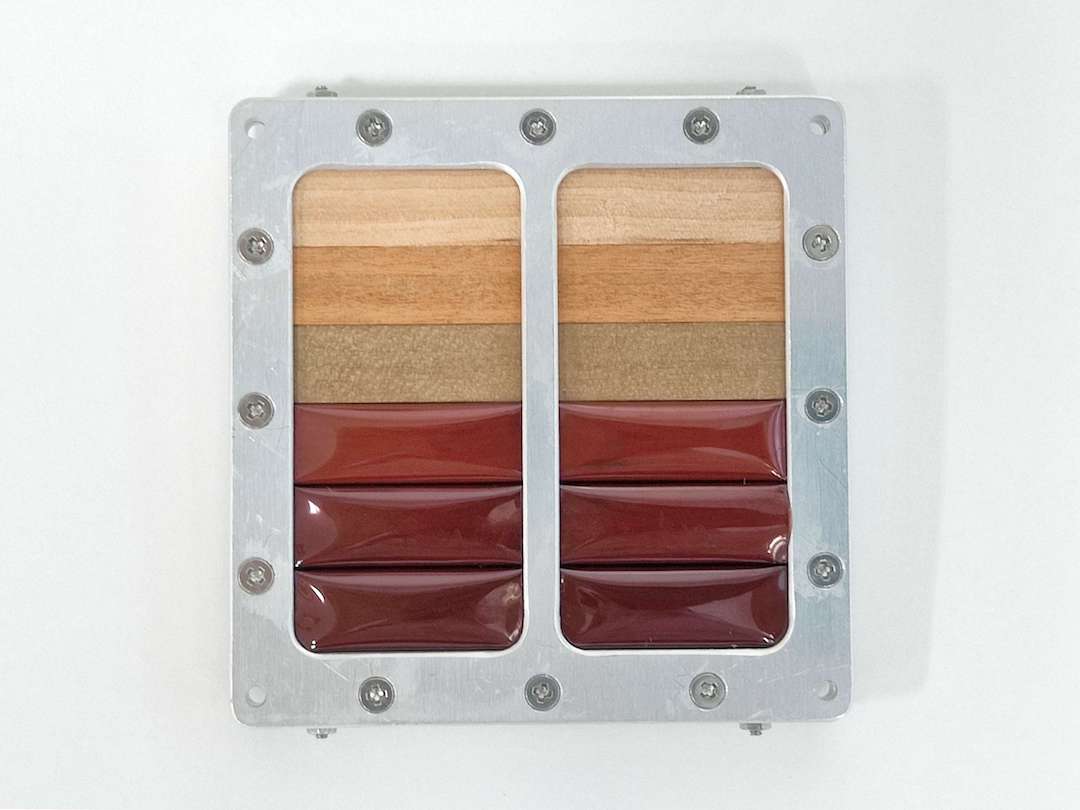Japan & NASA Are Launching The First Wooden Satellite Into Space
By Mikelle Leow, 27 Feb 2024

Artistic rendering of the wooden satellite. Image via Kyoto University Space Wood Laboratory
The Japan Aerospace Exploration Agency (JAXA) and NASA are branching out into new territory with the launch of LignoSat, the first satellite made almost entirely of wood, into orbit this summer to explore sustainable materials for spaceflight and address the issue of otherworldly debris.
Crafted from magnolia wood by experts at Kyoto University and Sumitomo Forestry, LignoSat is about the size of a coffee mug but could have a huge impact on how we think about materials in space. Magnolia was chosen for its impressive stability and resistance to cracking under the harsh conditions of space, making it an ideal candidate for this experiment.
The skies above us are cluttered with over 9,300 tons of space waste, ranging from defunct satellites to spent rocket stages, all of which contribute to light pollution and pose significant risks to operational spacecraft and the International Space Station (ISS). The use of wooden satellites could significantly reduce the dangers of interstellar junk.
#BREAKING: JAPAN TO LAUNCH WORLD'S FIRST WOODEN SATELLITE, LIGNOSAT, TO COMBAT SPACE DEBRIS. ECO-FRIENDLY PROBE SET FOR SUMMER ORBIT AIMS TO REDUCE HARMFUL ALUMINUM PARTICLES. KYOTO UNIVERSITY'S ASTRONAUT TAKAO DOI HIGHLIGHTS LONGEVITY OF ALUMINA IN UPPER ATMOSPHERE. MAGNOLIA… pic.twitter.com/simrw2qEuM
— Genius Bot X (@GeniusBotX) February 18, 2024

Image via Sumitomo Forestry / PR TIMES
Unlike their metal counterparts, wooden satellites are designed to burn up completely upon re-entry into Earth’s atmosphere, turning into harmless ash without leaving any debris behind.
ç§ãŸã¡ãŒè€ƒãˆã¦ã„ã‚‹æœ¨é€ äººå·¥è¡›æ˜Ÿ2å·æ©Ÿã®3D外観図ã§ã™ã€‚木æã®ç‰¹æ€§ã‚’生ã‹ã—ã¦åœ°ç£æ°—ã«ã‚ˆã‚‹å§¿å‹¢åˆ¶å¾¡ç³»ã‚’内蔵ã™ã‚‹äºˆå®šã§ã™ã€‚æœ¨é€ äººå·¥è¡›æ˜Ÿ2å·æ©Ÿã®é–‹ç™ºã®ãŸã‚ã®ã‚¯ãƒ©ã‚¦ãƒ‰ãƒ•ã‚¡ãƒ³ãƒ‡ã‚£ãƒ³ã‚°ã‚’始ã‚ã¾ã—ãŸã€‚皆ã•ã‚“ã‹ã‚‰ã®ã”支æ´ã‚’よã‚ã—ããŠé¡˜ã„ã—ã¾ã™ã€‚https://t.co/eQZSEdQJ0c 土井隆雄 pic.twitter.com/7xHPi3hsbf
— 京大宇宙木æプãƒã‚¸ã‚§ã‚¯ãƒˆ (@spaceKUwood) May 5, 2023
While tree-hugging is an earthly concept, the use of wood over metal as an environmental choice floats in space too. Metal satellites can release alumina particles into the upper atmosphere, where they can linger for years. Wooden counterparts, on the other hand, are designed to burn up completely upon re-entry into Earth’s atmosphere, leaving nothing but biodegradable ash. This drastically cuts the ecological footprint of space missions.

Image via Sumitomo Forestry / PR TIMES
Before settling on magnolia, researchers tested various wood types aboard the ISS, including cherry and birch, to see how they would withstand space conditions. Magnolia emerged as the top choice due to its outstanding properties.
The upcoming LignoSat mission will closely monitor how the wooden structure holds up in space, providing valuable data on the potential of wood as a material for future satellite construction.
While the launch vehicle for LignoSat has yet to be decided, with contenders including an Orbital Sciences Cygnus supply ship or a SpaceX Dragon mission to the ISS, the sustainable implications of this expedition are clear.
If successful, this project could pave the way for the broader adoption of wood in satellite manufacturing, marking a new chapter in our journey to the stars. Now, wooden’t that be stellar?
[via The Spaces, Space.com, The Guardian, Interesting Engineering, images via various sources]





